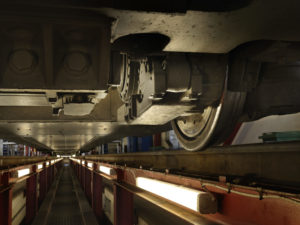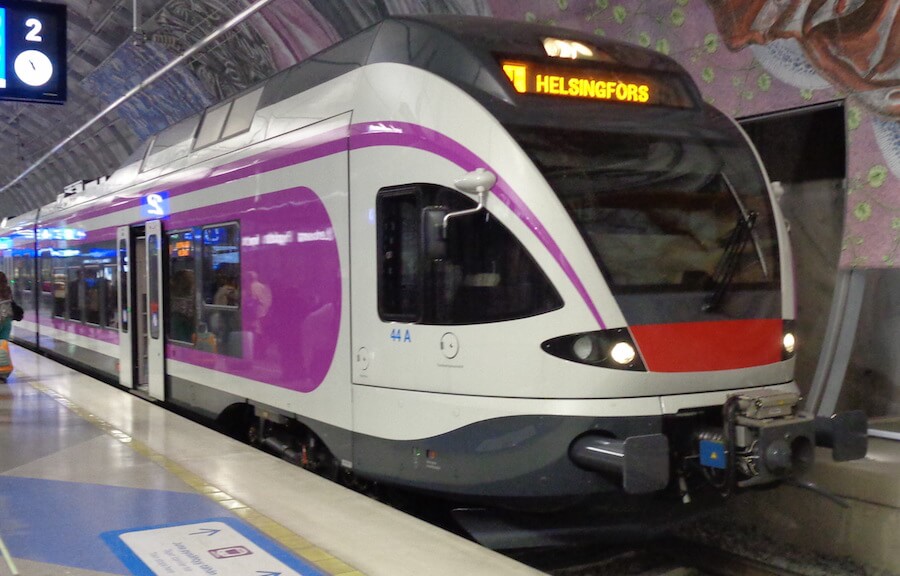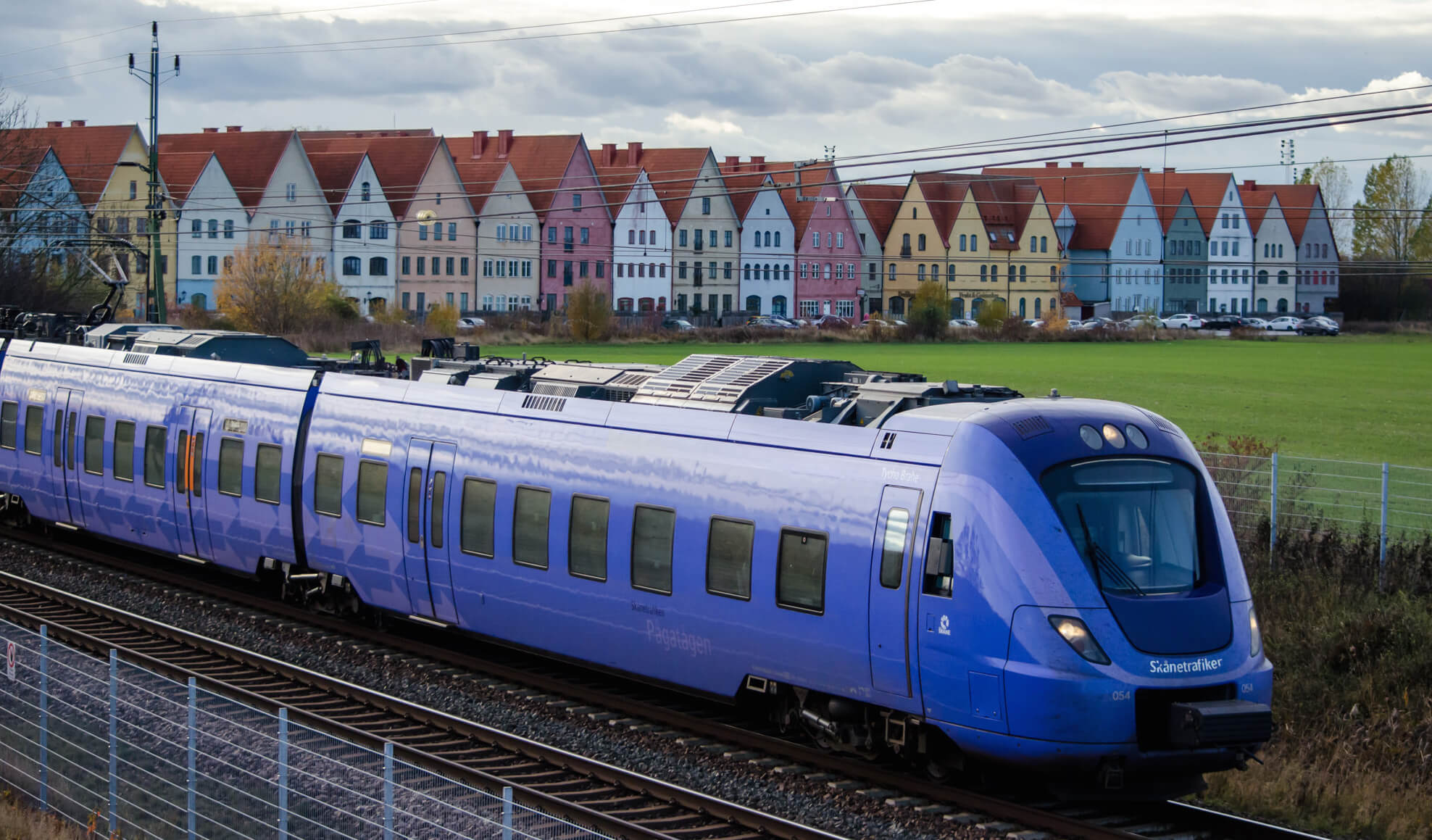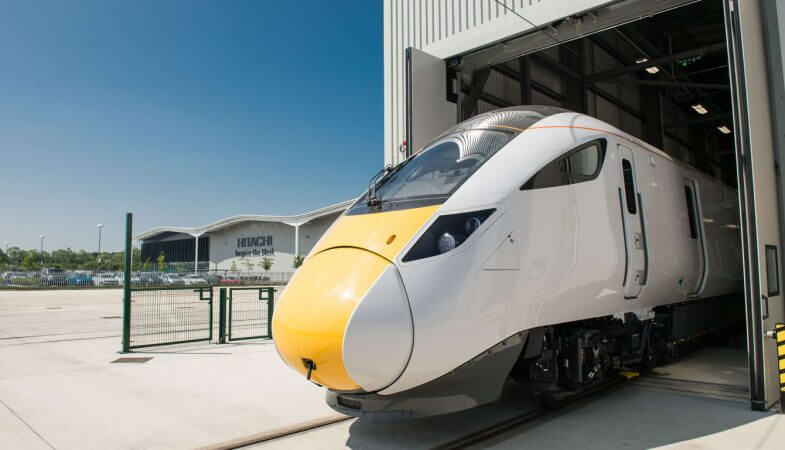The latest methods of bearing protection – including insulating coatings, hybrid bearings and sealed bearing units – help to extend maintenance intervals for traction motors in the rail industry.
In modern rail industry traction engines, AC motors have almost completely replaced DC motors as they present several advantages, including higher efficiency, reduced wear, less maintenance and greater power density.
However, that’s not to say they are problem-free. One consequence of using AC motors typically in combination with frequency converters is an increased risk of stray, high frequency currents. These can cause surface erosion of bearings, leading to potential failure. This then requires more frequent servicing – which undermines the original efficiency gains.

At the Innotrans 2018 exhibition – which takes place in Berlin on 18-21 September this year – SKF will highlight a range of solutions that can help designers and users of traction motors extend maintenance intervals and boost efficiency. All these solutions rely on SKF’s proven ability to protect bearings – to various degrees – from the conditions within AC motors.
Hybrid Approach
The most important technology is hybrid bearings, in which the steel rolling elements are replaced with ones made of ceramics. This material provides very high current insulation, so is resistant to the ‘damaging’ effects of AC motors.
Jochen Baum, Manager of the Railway Application Competence Centre at SKF in Germany, says:
“Hybrid bearings have the high resistance and low capacitance needed to withstand these conditions”
Some of the advantages of running these bearings include: high wear resistance; lower friction; higher speed capabilities; and no cold welding effects under poor lubrication or low load conditions. However, one main attribute of hybrid bearings is that they run cooler than conventional bearings, thanks to their lower friction. This has a profound effect on bearing life because it ensures that lubricant lasts longer.
Baum: “For grease-lubricated bearings – which are used in almost all traction motors – the maintenance interval is usually determined by the grease life”
“This is mainly affected by contamination, mechanical stressing and temperature.”
A temperature rise of just a few degrees can have a huge effect – while a 15°C rise in bearing temperature will cut grease life in approximately half. At the same time, the insulative nature of ceramics ensures there is no electrical ‘burning’ of the grease. In this way, adopting hybrid bearings can help to more than double the grease life – with a subsequent extension of the maintenance interval.
Yet, despite their many advantages, hybrid bearings have traditionally been considered unaffordable for general applications. However, recent manufacturing advances have helped to bring the price of hybrid bearings closer to that of standard bearings.
Baum: “For smaller bearings, it has been possible to reduce the price gap significantly – though large hybrid bearings are still more expensive than their standard equivalents”
“Taking lifecycle cost into account – rather than simply purchase cost – makes hybrid bearings even more attractive.”
An added advantage is that hybrid bearings can be swapped directly for their standard equivalents, as a direct retrofit replacement.
TMBU Boost
Hybrid bearings can be incorporated into a special design called a Traction Motor Bearing Unit (TMBU). In this arrangement, a customised unit – which is sealed and greased by SKF under clean conditions – extends maintenance intervals even further, as it addresses all the issues that shorten grease life.
Incorporating all the necessary elements into a single unit makes it relatively compact – as well as having lower mass and fewer parts than conventional arrangements.
Baum: “If you really need to maximise maintenance intervals, then this is the solution”
While TMBUs are an established technology, SKF has refined their design by adding sensors – which will link them more effectively to monitoring systems – as well as a retrofittable regreasing device. They also retain some of their traditional elements, such as a flange that simplifies the process of mounting them to the traction motor.
Incorporating hybrid bearings within a TMBU can re-double grease life, giving a further extension to maintenance intervals.
Insulated Coating
Hybrid solutions – particularly the hybrid TMBU – will guarantee the longest possible extension of maintenance interval.
However, not all applications require such an extension – and not all budgets will stretch far enough. A more basic solution is to use specially treated Insocoat bearings – which are standard steel bearings with an insulated coating that gives a degree of resistance against stray electric currents. Insocoat bearings are useful for designers who are not yet ready to make the switch to hybrid bearings due to missing experience with ceramic materials. They can also be incorporated into a TMBU arrangement.
SKF is currently expanding the capabilities of its Insocoat products: last year, for instance, it launched a new product that works more effectively in humid conditions – making it highly appropriate for rail applications in markets such as India and China. In addition, SKF will increase coating thickness on Insocoat bearings, to improve their effectiveness.
Baum: “With a thicker coating, the bearings will have a higher ohmic resistance and impedance”























